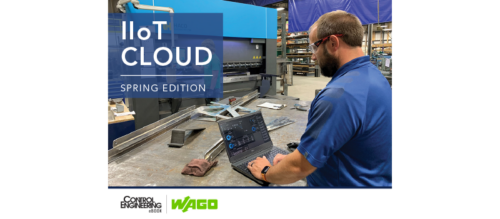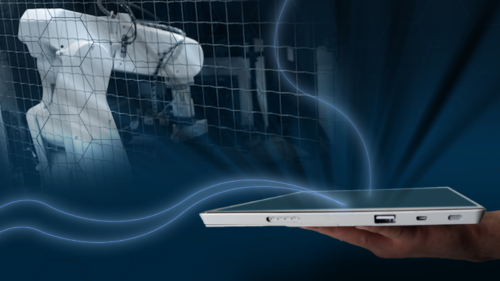Laser displacement sensor has CCD for speed, accuracy
New LK-G Series laser displacement sensors from Keyence offers non-contact measurement with resolution of 0.0004 mil (0.01 µm), a high-accuracy of ±0.03%, and an ultra-fast 50 kHz sampling speed.
A Keyence LK-G Series laser displacement sensor offers 10-times higher sensitivity and 25-times the speed of conventional systems.
New LK-G Series laser displacement sensors from Keyence offers non-contact measurement with resolution of 0.0004 mil (0.01or vibrating targets, and inline applications requiring data averaging. The sensors use a dedicated Li-CCD (linearized CCD), developed by Keyence specifically for sensor applications, to output the position of light within a pixel, for accuracy twice that of conventional models. (CCD is a charge-coupled device, which is chip-based memory activated by light.) Additionally, the proprietary LK-G design achieves a speed 25 times faster, with sensitivity 10-times higher than conventional systems. A newly developed high-accuracy Ernostar lens system drastically reduces spot distortion caused by aberrations. A highly rigid die-cast body reduces deviations caused by temperature change.Keyence’s ABLE (active balanced laser control engine) technology senses target surface conditions and adjusts the laser light intensity to an optimal level, providing a 13,000 times wider range of light intensity than previously possible. With ABLE, LK-G performance is unaffected by reflections, color, or surface coatings. Measurement performance on targets such as black-rubber, mirror-surfaced, and metal targets is said to be exceptional. An RPD (real peak detection) algorithm, developed by Keyence, cancels the diffused light caused by laser beam reflections inside translucent targets. RPD makes it possible to obtain highly accurate measurements of plastic, PCB, LCD covered glass, and a wide range of glass materials.
—Mark T. Hoske, editor-in-chief, Control Engineering, MHoske@cfemedia.com
Do you have experience and expertise with the topics mentioned in this content? You should consider contributing to our CFE Media editorial team and getting the recognition you and your company deserve. Click here to start this process.





